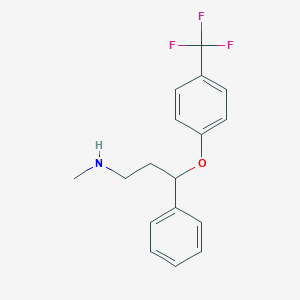
-
氟西汀
- names:
Fluoxetine
- CAS号:
54910-89-3
MDL Number: MFCD00072041 - MF(分子式): C17H18F3NO MW(分子量): 309.33
- EINECS:No data available Reaxys Number:No data available
- Pubchem ID:3386 Brand:BIOFOUNT
| 货品编码 | 规格 | 纯度 | 价格 (¥) | 现价(¥) | 特价(¥) | 库存描述 | 数量 | 总计 (¥) |
|---|
| 中文别名 | 氟西汀(54910-89-3,Fluoxetine);氟西丁;氟烷苯胺丙醚 |
| 英文别名 | Fluoxetine,54910-89-3,Fluoxetin,Pulvules,Prozac |
| CAS号 | 54910-89-3 |
| Inchi | InChI=1S/C17H18F3NO/c1-21-12-11-16(13-5-3-2-4-6-13)22-15-9-7-14(8-10-15)17(18,19)20/h2-10,16,21H,11-12H2,1H3 |
| InchiKey | RTHCYVBBDHJXIQ-UHFFFAOYSA-N |
| 分子式 Formula | C17H18F3NO |
| 分子量 Molecular Weight | 309.33 |
| 溶解度Solubility | In Vivo:1.Fluoxetine is prepared in vehicle (sterile saline)[6]. |
| 性状 | 白色至类白色结晶性固体 |
| 储藏条件 Storage conditions | 请根据产品建议的存储条件进行存储,Please store the product under the recommended condition sin the description. |
氟西汀(54910-89-3,Fluoxetine)的毒性测试:
| 生物 | 测试类型 | 路线 | 报告剂量(标准化剂量) | 影响 | 参考 |
|---|---|---|---|---|---|
| man | TDLo | oral | 17mg/kg (17mg/kg) | BEHAVIORAL: CONVULSIONS OR EFFECT ON SEIZURE THRESHOLD | American Journal of Emergency Medicine. Vol. 16, Pg. 328, 1998. |
| man | TDLo | oral | 17mg/kg (17mg/kg) | BEHAVIORAL: SOMNOLENCE (GENERAL DEPRESSED ACTIVITY) BEHAVIORAL: CONVULSIONS OR EFFECT ON SEIZURE THRESHOLD BEHAVIORAL: "HALLUCINATIONS, DISTORTED PERCEPTIONS" |
American Journal of Emergency Medicine. Vol. 16, Pg. 328, 1998. |
| mouse | LD50 | intraperitoneal | 87500ug/kg (87.5mg/kg) | Drugs of the Future. Vol. 15, Pg. 1178, 1990. | |
| mouse | LD50 | oral | 464mg/kg (464mg/kg) | Drugs of the Future. Vol. 15, Pg. 1178, 1990. | |
| rat | LD50 | intraperitoneal | 121mg/kg (121mg/kg) | Drugs of the Future. Vol. 15, Pg. 1178, 1990. | |
| rat | LD50 | oral | 825mg/kg (825mg/kg) | Drugs of the Future. Vol. 15, Pg. 1178, 1990. | |
| women | TDLo | oral | 2mg/kg/5D-I (2mg/kg) | LUNGS, THORAX, OR RESPIRATION: DYSPNEA BEHAVIORAL: SOMNOLENCE (GENERAL DEPRESSED ACTIVITY) |
Archives of Internal Medicine. Vol. 156, Pg. 681, 1996. |
| women | TDLo | oral | 16800ug/kg/6W (16.8mg/kg) | BEHAVIORAL: ANTIPSYCHOTIC BEHAVIORAL: MUSCLE WEAKNESS |
Archives of Internal Medicine. Vol. 156, Pg. 681, 1996. |
| women | TDLo | oral | 60mg/kg/21W-I (60mg/kg) | American Journal of Psychiatry. Vol. 153, Pg. 134, 1996. | |
| women | TDLo | oral | 72mg/kg/26W-I (72mg/kg) | BEHAVIORAL: SOMNOLENCE (GENERAL DEPRESSED ACTIVITY) | Journal of Clinical Pyschopharmacology. Vol. 10, Pg. 343, 1990. |
氟西汀(54910-89-3,Fluoxetine)实验注意事项:
1.实验前需戴好防护眼镜,穿戴防护服和口罩,佩戴手套,避免与皮肤接触。
2.实验过程中如遇到有毒或者刺激性物质及有害物质产生,必要时实验操作需要手套箱内完成以免对实验人员造成伤害
3.实验后产生的废弃物需分类存储,并交于专业生物废气物处理公司处理,以免造成环境污染
Fluoxetine(54910-89-3) Experimental considerations:
1. Wear protective glasses, protective clothing and masks, gloves, and avoid contact with the skin during the experiment.
2. The waste generated after the experiment needs to be stored separately, and handed over to a professional biological waste gas treatment company to avoid environmental pollution.
Tag:氟西汀(54910-89-3,Fluoxetine),氟西汀抑制剂,氟西汀试剂,氟西汀的作用,氟西汀盐酸盐,氟西汀游离态,氟西汀的中间体,氟西汀的API,氟西汀的MSDS,氟西汀的外观,氟西汀的合成,氟西汀的生产,氟西汀的使用
| 产品说明 | 氟西汀(54910-89-3)为白色至类白色结晶性固体,易溶于甲醇或乙醇,氟西汀几不溶于环己烷,己烷或甲苯.氟西汀溶解度,氟西汀MSDS详见主页. |
| Introduction | Fluoxetine (54910-89-3, 氟西汀) is a white to off-white crystalline solid, easily soluble in methanol or ethanol, but almost insoluble in cyclohexane, hexane or toluene. |
| Application1 | Fluoxetine delays the reuptake of serotonin, resulting in serotonin persisting longer when it is released. |
| Application2 | Fluoxetine may also produce some of its effects via its weak 5-HT2C receptor antagonist effects. |
| Application3 | Fluoxetine has been found to act as an agonist of the σ1-receptor, with a potency greater than that of citalopram but less than that of fluvoxamine. |
Fluoxetine hydrochloride is the first agent of the class of antidepressants known as selective serotonin-reuptake inhibitors (SSRIs). Despite distinct structural differences between compounds in this class, SSRIs possess similar pharmacological activity. As with other antidepressant agents, several weeks of therapy may be required before a clinical effect is seen. SSRIs are potent inhibitors of neuronal serotonin reuptake. They have little to no effect on norepinephrine or dopamine reuptake and do not antagonize α- or β-adrenergic, dopamine D2 or histamine H1 receptors. During acute use, SSRIs block serotonin reuptake and increase serotonin stimulation of somatodendritic 5-HT1A and terminal autoreceptors. Chronic use leads to desensitization of somatodendritic 5-HT1A and terminal autoreceptors. The overall clinical effect of increased mood and decreased anxiety is thought to be due to adaptive changes in neuronal function that lead to enhanced serotonergic neurotransmission. Side effects include dry mouth, nausea, dizziness, drowsiness, sexual dysfunction, and headache. Side effects generally occur within the first two weeks of therapy and are usually less severe and frequent than those observed with tricyclic antidepressants. Fluoxetine may be used to treat major depressive disorder (MDD), moderate to severe bulimia nervosa, obsessive-compulsive disorder (OCD), premenstrual dysphoric disorder (PMDD), panic disorder with or without agoraphobia, and, in combination with olanzapine, for treatment-resistant or bipolar I depression. Fluoxetine is the most anorexic and stimulating SSRI.
氟西汀(54910-89-3,Fluoxetine)的生产方法:
方法1:苯乙酮和多聚甲醛及甲胺进行Mannich反应,生成β-甲氨基苯丙酮的盐酸盐和双[N-(2-苯甲酰基)乙基]甲胺的盐酸盐,氟西汀的制备只需前者,而后者是副产物。叔胺副产物可通过水蒸气蒸馏,使其分解为有用的仲胺。将前面得到的仲胺加到碳酸钾的水溶液中,再加入乙醇溶解,分批加入硼氢化钾,加毕继续反应。减压蒸除乙醇,剩余液先用乙醚后用氯仿萃取。萃取液合并,盐水洗至Ph值8.0,干燥。过滤,减压蒸出有机溶剂。残留物用己烷重结晶,得N-甲基-3-苯基-3-羟基丙胺,收率89.7%。将其溶于N,N-二甲基乙酰胺(DMAC)中,加入氢化钠,缓慢升温至70℃保温。再加入碘化钾和对氯三氟甲苯,升至90℃反应。加水稀释,乙醚萃取。萃取液用盐水洗至Ph值8.0,干燥,过滤,通氯化氢气体至Ph值1.0,放置。滤集结晶,烘干,用乙酸乙酯重结晶,得盐酸氟西汀,收率80%,熔点152~153℃。
方法2:β-甲氨基苯丙酮用硼烷来还原为醇后,用氯化亚砜氯化,生成3-甲氨基-1-苯基-1-丙醇,接着和对三氟苯酚钠反应,得到氟西汀。方法3:8.1g溴化氰溶于500ml苯和50ml甲苯中,在5℃、搅拌和氮气鼓泡保护下,滴加12.146gN,N-二甲基-3-(4-三氟甲基苯氧基)-3-苯基丙胺溶于40ml苯的溶液。反应温度允许升至室温,并在氮气气氛中继续搅拌过夜。加入100rnl苯,反应液用水洗2次,再用1mol/L。硫酸水溶液洗1次,然后用水洗至中性。干燥,减压蒸去溶剂,得9.5g油状的N-甲基-N-氰基-3-(4-三氟甲基苯氧基)-3-苯基丙胺。100g氢氧化钾、85ml水、400ml乙二醇和9.50gN-甲基-N-氰基-3-(4-三氟甲基苯氧基)-3-苯基丙胺一起,回流(130℃)20h,然后冷却。加入500ml水后,用3份500ml乙醚萃取。合并萃取液,水洗后,用2mol/L盐酸水溶液萃取。分出萃取液后,有机层先后用1次2mol/L盐酸水溶液、3次水和1次饱和氯化钠水溶液进行萃取。所有水溶性萃取液合并,用5mol/L氢氧化钠水溶液碱化。因氟西汀不溶于碱性水溶液,故而析出。用乙醚萃取3次,合并萃取液,用饱和氯化钠水溶液洗后,干燥,减压蒸去乙醚,得6.3g氟西汀。
| 警示图 | |
| 危险性 | warning |
| 危险性警示 | Not available |
| 安全声明 | H303吞入可能有害+H313皮肤接触可能有害+H2413吸入可能对身体有害 |
| 安全防护 | P264处理后彻底清洗+P280戴防护手套/穿防护服/戴防护眼罩/戴防护面具+P305如果进入眼睛+P351用水小心冲洗几分钟+P338取出隐形眼镜(如果有)并且易于操作,继续冲洗+P337如果眼睛刺激持续+P2393获得医疗建议/护理 |
| 备注 | 实验过程中防止吸入、食入,做好安全防护 |
| Effect of CYP2D6 and CYP2C9 genotypes on fluoxetine and norfluoxetine plasma concentrations during steady-state conditions |
| Apoptotic effect of fluoxetine through the endoplasmic reticulum stress pathway in the human gastric cancer cell line AGS |
| Fluoxetine: Lilly has gained approval in Belgium for their serotonin uptake inhibitor to be used in depressive disorders |
| Fluoxetine as an antidepressant medicine improves the effects of ionizing radiation for the treatment of glioma |
| Fluoxetine once every third day in\\nthe treatment of major depressive disorder |
Preclinical animal anxiety research - flaws and prejudices.
Ennaceur A1, Chazot PL2. Pharmacol Res Perspect. 2016 Mar 8;4(2):e00223. doi: 10.1002/prp2.223. eCollection 2016.
Abstract:The current tests of anxiety in mice and rats used in preclinical research include the elevated plus-maze (EPM) or zero-maze (EZM), the light/dark box (LDB), and the open-field (OF). They are currently very popular, and despite their poor achievements, they continue to exert considerable constraints on the development of novel approaches. Hence, a novel anxiety test needs to be compared with these traditional tests, and assessed against various factors that were identified as a source of their inconsistent and contradictory results. These constraints are very costly, and they are in most cases useless as they originate from flawed methodologies. In the present report, we argue that the EPM or EZM, LDB, and OF do not provide unequivocal measures of anxiety; that there is no evidence of motivation conflict involved in these tests. They can be considered at best, tests of natural preference for unlit and/or enclosed spaces. We also argued that pharmacological validation of a behavioral test is an inappropriate approach; it stems from the confusion of animal models of human behavior with animal models of pathophysiology.
Repurposing psychiatric medicines to target activated microglia in anxious mild cognitive impairment and early Parkinson's disease.
Lauterbach EC1. Am J Neurodegener Dis. 2016 Mar 1;5(1):29-51. eCollection 2016.
Abstract:Anxiety is common in the Mild Cognitive Impairment (MCI) stage of Alzheimer's disease (AD) and the pre-motor stages of Parkinson's disease (PD). A concomitant and possible cause of this anxiety is microglial activation, also considered a key promoter of neurodegeneration in MCI and early PD via inflammatory mechanisms and the generation of degenerative proinflammatory cytokines. Psychiatric disorders, prevalent in AD and PD, are often treated with psychiatric drugs (psychotropics), raising the question of whether psychotropics might therapeutically affect microglial activation, MCI, and PD. The literature of common psychotropics used in treating psychiatric disorders was reviewed for preclinical and clinical findings regarding microglial activation. Findings potentially compatible with reduced microglial activation or reduced microglial inflammogen release were evident for: antipsychotics including neuroleptics (chlorpromazine, thioridazine, loxapine) and atypicals (aripiprazole, olanzapine, quetiapine, risperidone, ziprasidone); mood stabilizers (carbamazepine, valproate, lithium); antidepressants including tricyclics (amitriptyline, clomipramine, imipramine, nortriptyline), SSRIs (citalopram, escitalopram, fluoxetine, fluvoxamine, paroxetine, sertraline), venlafaxine, and bupropion; benzodiazepine anxiolytics (clonazepam, diazepam); cognitive enhancers (donepezil, galantamine, memantine); and other drugs (dextromethorphan, quinidine, amantadine).
Bipolar depression: Managing patients with second generation antipsychotics.
Avery LM1, Drayton SJ2. Int J Psychiatry Med. 2016;51(2):145-59. doi: 10.1177/0091217416636576.
Abstract:Bipolar affective disorder is a debilitating illness that manifests as cyclical episodes of mood elevation and depression, but the treatment of the depressive episodes (i.e., bipolar depression) differs considerably from the treatment of major depressive disorder. In bipolar affective disorder, it is well known that patients spend a significantly greater amount of time in depressive episodes than manic or hypomanic episodes, yet there are currently just three Food and Drug Administration-approved agents for the treatment of bipolar depression: (1) olanzapine/fluoxetine combination (2) quetiapine, both immediate- and extended-release, and (3) lurasidone. The literature review presented here focuses on the clinical trials that led to the Food and Drug Administration-approval of these second generation antipsychotics in the treatment of bipolar depression. The discussion highlights key considerations regarding overall treatment strategies to aid clinicians in the selection of pharmacologic agents.
化学品安全技术说明书 | 版本:1.0 | |||
按照GB/T16483、GB/T17519编制 | 修订日期:10.07.2019 | |||
| 打印日期:19.02.2020 | |||
版权所有:范德(北京)生物科技有限责任公司 | 最初编制日期:25.05.2017 | |||
公司网站:WWW.BIO-FOUNT.COM | SDS编号:YZM002104 | |||
版权所有:BIOFOUNT BEIJING BIO TECH CO.,LTD | 产品编号:YZM002104 | |||
Fluoxetine | ||||
说明书目录 | ||||
第1部分 | 第2部分 | 危险性概述 | ||
第3部分 | 成分/组成信息 | 第4部分 | 急救措施 | |
第5部分 | 消防措施 | 第6部分 | 泄露应急处理 | |
第7部分 | 操作处置与储存 | 第8部分 | 接触控制/个体防护 | |
第9部分 | 理化性质 | 第10部分 | 稳定性和反应性 | |
第11部分 | 毒理学信息 | 第12部分 | 生态学危害信息 | |
第13部分 | 废弃处置 | 第14部分 | 运输信息 | |
第15部分 | 法律法规信息 | 第16部分 | 其他补充信息 | |
第1部分:化学品及企业标识 | ||||
1.1 产品标识 | ||||
Fluoxetine | ||||
ENGLISH NAME: | Fluoxetine | |||
YZM002104 | ||||
BIOFOUNT | ||||
54910-89-3 | ||||
1.2 安全技术说明书提供者的详情 | ||||
制造商或供应商名称: | ||||
制造地址: | 59 KANGTAI AVENUE BINHAI NEW DISTRICT TIANJIN 300450 TIANJIN CHINA 范德(天津)生物科技有限责任公司 天津市滨海新区康泰大道59号九州通绿谷健康产业园 邮政编码:300450 | |||
电话号码: | | |||
1.3 应急咨询电话 | ||||
紧急联系电话: | | |||
1.4 物质或混合物的推荐用途和限制用途 | ||||
已确认的各用途: | 仅用于科学研发,不作为药品、家庭或其它用途。 | |||
第2部分:危险性概述 | ||||
2.1 GHS危险性类别 | ||||
暂无数据 | ||||
2.2 GHS 标签要素,包括防范说明 | ||||
象形图 | ||||
暂无数据 | ||||
暂无数据 | ||||
暂无数据 | ||||
警告申明 | ||||
暂无数据 | ||||
暂无数据 | ||||
事故响应 | ||||
1.化学品使用过程中,当出现事故或者有紧急情况发生时,当事人应第一时间向应急小组负责人汇报后,由应急小组采取措施防止事态扩大。2.应急小组对受害人采取救护措施。 | ||||
请根据产品建议的存储条件进行存储,Please store the product under the recommended condition sin the description. | ||||
废弃处置 | ||||
暂无数据 | ||||
2.3 物理和化学危险 | ||||
暂无数据 | ||||
2.4 健康危害 | ||||
暂无数据 | ||||
2.5 环境危害 | ||||
暂无数据 | ||||
2.6 其它危害物 | ||||
暂无数据 | ||||
第3部分:成分/组成信息 | ||||
物质/混合物 | 暂无数据 | |||
3.1 物 质 | ||||
C17H18F3NO | ||||
309.33 | ||||
54910-89-3 | ||||
EC-编号 | 暂无数据 | |||
根据相应法规,无需披露具体组份。 | ||||
第4部分:急救措施 | ||||
4.1 必要的急救措施描述 | ||||
吸入 | ||||
立即将患者移至空气新鲜处,发现呼吸困难时,必须立即采取吸氧处理,停止呼吸时采取人工呼吸。同时联系及时就医。 | ||||
皮肤接触 | ||||
立即脱去或者剪去污染的衣物,迅速用大量的流动清水冲10-20分钟甚至更长时间后,赴医院就医。 | ||||
眼睛接触 | ||||
立即用大量的流动清水冲10-20分钟后赴医院就医处理。 | ||||
食入 | ||||
误食化学物品后,应立即采取措施进行催吐。1.若误食化学品呈酸性,则可服用大量牛奶和水,促使食如折呕吐。2.若误食化学品呈碱性,则可服用大量牛奶、清水和醋,促使其呕吐,紧急处理后,应及时送至医院进行治疗(仅供参考)。食如者昏迷状态下禁止催吐,以免造成窒息。 | ||||
4.2 最重要的症状和健康影响 | ||||
最重要的已知症状及作用已在标签(参见章节2.2)和/或章节11中介绍 | ||||
暂无数据 | ||||
4.4 对医生的特别提示 | ||||
暂无数据 | ||||
第5部分:消防措施 | ||||
5.1 灭火介质 | ||||
采用泡沫灭火器、二氧化碳灭火器,避免造成二次污染发生。 | ||||
5.2 源于此物质或混合物的特别的危害 | ||||
暂无数据 | ||||
5.3 灭火注意事项及保护措施 | ||||
小规模着火需戴好口罩,防止有毒气体吸入。火灾发生时及时启动应急相应系统撤离至上风口处,并联系当地消防部门灭火。 | ||||
第6部分:泄露应急处理 | ||||
1.泄露后首先启动应急相应系统2.泄露处理前,需穿戴好安全安全防护鞋、穿戴好安全防护手套(强酸性物质需穿戴防酸碱手套)、根据吸入危险性穿戴相应防护面罩。 有关个人防护,请看第8部分。 | ||||
6.2 环境保护措施 | ||||
参照《范德生物化学废弃物处理方法》处理,防止对环境造成危害,处理后交由有资质的废弃物处理结构进行处理,以免造成环境污染。 | ||||
参照《范德生物化学品废弃物处理方法》对泄露的化学品进行处理,处理前需用化学品吸附岩棉对泄露区域进行围挡,形成“围堰”防止泄露扩大。 | ||||
6.4 参考其他部分 | ||||
丢弃处理请参阅第13节。 | ||||
第7部分:操作处置与储存 | ||||
7.1 安全操作的注意事项 | ||||
使用过程请穿戴好口罩,手套等防护用品,避免与皮肤接触、吸入、误食危险。 有关预防措施,请参见章节2.2。 | ||||
7.2 安全储存的条件,包括任何不兼容性 | ||||
暂时无法提供详细数据,尽可能避免与其他化合物混合存储,避光、通风处存储。 | ||||
第8部分:接触控制/个体防护 | ||||
8.1 控制参数 | ||||
暂无数据 | ||||
8.2 暴露控制 | ||||
适当的技术控制 | ||||
暂无数据 | ||||
个体防护装备 | ||||
一般情况下穿戴安全防护眼镜即可,如有飞溅液体、粉末产生时,请佩戴防溅面罩进行防护。穿戴的防护用品需取得如:GB、NIOSH (美国) 或 EN 166(欧盟) 等相关认证。 | ||||
手套脱去注意事项:手套在使用前必须进行检查,请使用正确的方法脱除手套(不接触手套外部表面),避免身体任何皮肤部位接触到此产品。根据相关法律法规和实验室管理规范制度,手套使用过后,请将被污染的手套谨慎处理,工作后清洗并吹干双手。 所选择的保护手套必须符合法规《劳动防护用品配备标准》、(EU)2016/425以及从此类法规衍生出来的EN 374标准规范。 完全接触保护要求: 手套材料:丁腈橡胶 手套最小的层厚度:0.11 MM 手套溶剂渗透时间:480 分钟 飞溅保护要求: 材料:丁腈橡胶 最小的层厚度 0.11 MM 溶剂渗透时间:480 分钟 如果以溶剂形式应用或与其它物质混合应用,或在不同于《劳动防护用品配备标准》,EN 374规定的条件下应用,请与EC批准的手套的供应商联系。该条只是作为推荐性建议,如遇特殊情况,务必请熟悉该产品属性的专家,选取相关防护用品。此条建议不应该被认定为适应所有特殊条件防护,请根据所处工作条件请求专业工程师指导采取相应防护措施。 | ||||
选择身体部分的防护措施,需要根据危险物质的类型、浓度、量以及特定的工作环境。身体部分防护设备、防护服的类型,必须根据使用者工作场所中的危险物质的浓度、数量进行选择。 | ||||
一般情况下穿戴普通的医用口罩保护呼吸系统即可。有酸雾产生式活性炭类口罩起不到防护作用,如需对粉尘造成损害进行防护时,请采用N95型(US)或P1型(EN 143)类口罩或者防尘面具。特殊情况下使用自吸式呼吸器时,使用的呼吸器必须对呼吸器密闭性、空气供应系统、供气压进行测试,当然呼吸器需通过强制认证标准如:GB、NIOSH(US)、CEN(EU)。 | ||||
环境暴露的控制 | ||||
不要让产品进入下水道。 | ||||
第9部分:理化特性 | ||||
9.1 基本的理化特性的信息 | ||||
形状:暂无数据 | ||||
| 颜色:暂无数据 | |||
气味 | 暂无数据 | |||
气味阈值 | 暂无数据 | |||
暂无数据 | ||||
暂无数据 | ||||
初沸点和沸程 | 395.1±42.0 °C at 760 mmHg | |||
闪点 | 192.8±27.9 °C | |||
蒸发速率 | 暂无数据 | |||
易燃性(固体,气体) | 暂无数据 | |||
高的/低的燃烧性或爆炸性限度 | 暂无数据 | |||
蒸气压 | 0.0±0.9 mmHg at 25°C | |||
蒸气焓 | 64.5±3.0 kJ/mol | |||
密度/相对密度 | 1.2±0.1 g/cm3 | |||
10 mM in DMSOMedChem ExpressHY-B0102 | ||||
正辛醇/水分配系数 | Log Kow (KOWWIN v1.67 estimate) = 4.65
Log Kow (Exper. database match) = 4.05
Exper. Ref: Adlard,M et al. (1995)/ Boiling Pt, Melting Pt, Vapor Pressure Estimations (MPBPWIN v1.42):
Boiling Pt (deg C): 347.23 (Adapted Stein & Brown method)
Melting Pt (deg C): 105.27 (Mean or Weighted MP)
VP(mm Hg,25 deg C): 2.52E-005 (Modified Grain method)
Subcooled liquid VP: 0.000154 mm Hg (25 deg C, Mod-Grain method) | |||
正辛醇空气分配系数 | Log Kow used: 4.05 (exp database)
Log Kaw used: -5.439 (HenryWin est)
Log Koa (KOAWIN v1.10 estimate): 9.489
Log Koa (experimental database): None | |||
自燃温度 | 暂无数据 | |||
分解温度 | 暂无数据 | |||
黏度 | 暂无数据 | |||
暂无数据 | ||||
氧化性 | 暂无数据 | |||
根据碎片估算水溶胶 | Wat Sol (v1.01 est) = 0.95767 mg/L | |||
亨利定律常数(25摄氏度) | Bond Method : 8.90E-008 atm-m3/mole
Group Method: Incomplete
Henrys LC [VP/WSol estimate using EPI values]: 2.675E-007 atm-m3/mole | |||
9.2 其他安全信息 | ||||
暂无数据 | ||||
第10部分:稳定性和反应性 | ||||
10.1 稳定性 | ||||
暂无数据 | ||||
10.2 危险反应 | ||||
暂无数据 | ||||
10.3 应避免的条件 | ||||
暂无数据 | ||||
10.4 禁配物 | ||||
强氧化剂 | ||||
10.5 危险的分解产物 | ||||
暂无数据 | ||||
第11部分:毒理学信息 | ||||
11.1 毒理学影响信息 | ||||
暂无数据 | ||||
皮肤腐蚀/刺激 | ||||
暂无数据 | ||||
暂无数据 | ||||
呼吸或皮肤过敏 | ||||
暂无数据 | ||||
暂无数据 | ||||
暂无数据 | ||||
生殖毒性 | ||||
暂无数据 | ||||
特异性靶器官系统毒性(一次接触) | ||||
暂无数据 | ||||
特异性靶器官系统毒性(反复接触) | ||||
暂无数据 | ||||
吸入危害 | ||||
暂无数据 | ||||
附加说明 | ||||
暂无数据 | ||||
第12部分:生态学危害信息 | ||||
12.1 生态毒性 | ||||
暂无数据 | ||||
12.2 持久性和降解性 | ||||
暂无数据 | ||||
12.3 快速生物降解的可能性 | ||||
Biowin1 (Linear Model) : 0.4937
Biowin2 (Non-Linear Model) : 0.1305
Expert Survey Biodegradation Results:
Biowin3 (Ultimate Survey Model): 1.9910 (months )
Biowin4 (Primary Survey Model) : 3.2523 (days-weeks ) | ||||
12.4 专家调查生物降解结果 | ||||
暂无数据 | ||||
12.5 MITI生物降解的可能性 | ||||
Biowin5 (MITI Linear Model) : 0.2360
Biowin6 (MITI Non-Linear Model): 0.0000 | ||||
12.6 厌氧生物降解的可能性 | ||||
Biowin7 (Anaerobic Linear Model): 0.5562 | ||||
12.7 现成的生物降解性预测 | ||||
NO | ||||
12.8 碳氢化合物生物降解 | ||||
Structure incompatible with current estimation method! | ||||
12.9 对气溶胶的吸附 | ||||
Vapor pressure (liquid/subcooled): 0.0205 Pa (0.000154 mm Hg)
Log Koa (Koawin est ): 9.489
Kp (particle/gas partition coef. (m3/ug)):
Mackay model : 0.000146
Octanol/air (Koa) model: 0.000757 | ||||
12.10 羟基自由基反应 | ||||
OVERALL OH Rate Constant = 36.8660 E-12 cm3/molecule-sec
Half-Life = 0.290 Days (12-hr day; 1.5E6 OH/cm3)
Half-Life = 3.482 Hrs | ||||
12.11 臭氧反应 | ||||
No Ozone Reaction Estimation | ||||
12.12 空气中颗粒物吸附的分数(PHI) | ||||
0.0084 (Junge,Mackay)
Note: the sorbed fraction may be resistant to atmospheric oxidation | ||||
12.13 土壤吸附系数 | ||||
Koc : 2.074E+005
Log Koc: 5.317 | ||||
12.14 碱/酸催化水解(25℃) | ||||
Rate constants can NOT be estimated for this structure! | ||||
12.15 利用对数KOW估算生物累积量 | ||||
Log BCF from regression-based method = 2.419 (BCF = 262.1)
log Kow used: 4.05 (expkow database) | ||||
12.16 废水处理中的去除 | ||||
Total removal: 32.40 percent
Total biodegradation: 0.34 percent
Total sludge adsorption: 32.06 percent
Total to Air: 0.00 percent
(using 10000 hr Bio P,A,S) | ||||
12.17 三级逸度模型 | ||||
Mass Amount Half-Life Emissions
(percent) (hr) (kg/hr)
Air 0.124 6.96 1000
Water 11.8 1.44e+003 1000
Soil 84.1 2.88e+003 1000
Sediment 4 1.3e+004 0
Persistence Time: 1.94e+003 hr | ||||
12.18 土壤中的迁移性 | ||||
暂无数据 | ||||
12.19 PBT和VPVB的结果评价 | ||||
暂无数据 | ||||
12.20 其他环境有害作用 | ||||
暂无数据 | ||||
第13部分:废弃处置 | ||||
13.1 废物处理 | ||||
None | ||||
None | ||||
第14部分:运输信息 | ||||
14.1 联合国编号 / UN NUMBER | ||||
欧洲陆运危规 / ER/RID: | None | |||
国际海运危规 / IMDG: | None | |||
国际空运危规 / IATA-DGR: | None | |||
14.2 联合国运输名称 / UN PROPER SHIPPING NAME | ||||
欧洲陆运危规: | None | |||
国际海运危规: | None | |||
国际空运危规: | None | |||
欧洲陆运危规 / ER/RID: | None | |||
国际海运危规 / IMDG: | None | |||
国际空运危规 / IATA-DGR: | None | |||
欧洲陆运危规 / ER/RID : | None | |||
国际海运危规 / IM0DG: | None | |||
国际空运危规 / IATA-DGR: | None | |||
None | ||||
14.6 特殊防范措施 / SPECIAL PRECAUTIONS FOR USER | ||||
None | ||||
None | ||||
第15部分:法律法规信息 | ||||
适用法规 | ||||
《中华人民共和国安全生产法》、《职业病防治法》、《化学化工实验室安全管理规范》 | ||||
其它的规定 | ||||
《生产安全事故报告和调查处理条例》、《职业病防治法》、《职业安全和卫生法》美国1970 | ||||
第16部分:其他补充信息 | ||||
其他信息 版权所有:BIOFOUNT BEIJING BIO TECH CO.,LTD 公司。许可无限制纸张拷贝,仅限于内部使用。 上述信息视为正确,但不包含所有的信息,仅作为指引使用。本文件中的信息是基于我们目前所知,就正确的安全提示来说适用于本品。该信息不代表对此产品性质的保证。BIOFOUNT公司及其附属公司对任何操作或者接触上述产品而引起的损害不负有任何责任。更多使用条款,参见发票或包装条的反面。 更多销售条款及条件请参见HTTP://WWW.BIO-FOUNT.COM/或发票或装箱单的背面。欲悉详情,请联系:SALES@BIO-FOUNT.COM | ||||
- 相关产品
-
< >
- 推荐产品
-
< >
- 最新产品
-
< >
新闻
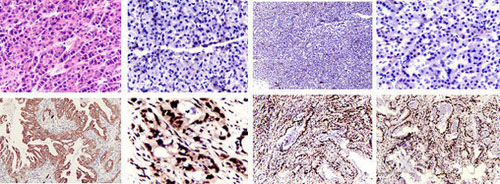
怎么做细胞爬片免疫组化染色实验
细胞爬片免疫组化染色,是通过细胞爬片是让玻片浸在细胞培养基内,细胞在玻片上生长,主要用于组织学,免疫组织化学...
2020/7/20 22:04:33
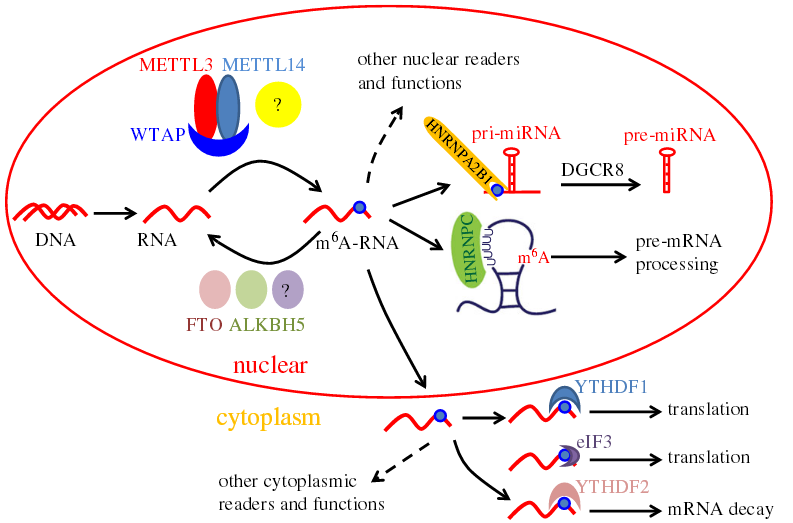
提取病毒RNA的实验方法
提取病毒RNA方法分别有:异硫氰酸胍的提取病毒RNA方法、TRIzol LS提取法、Trizol法提取法等等...
2020/7/22 20:29:26
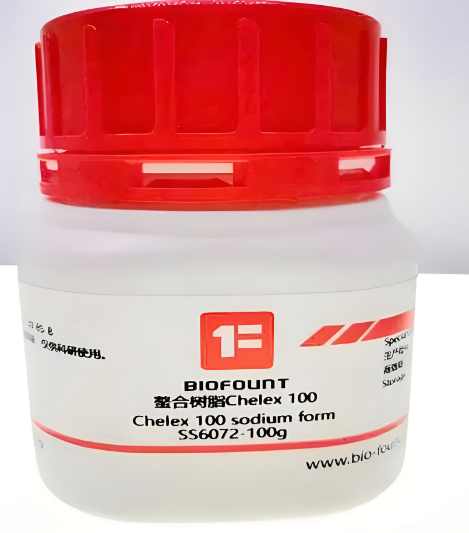
chelex 100树脂国产替代之路-BIOFOUNT范德生物
Chelex 100螯合离子交换树脂对铜、铁和其他重金属?的偏好显著高于对钠、钾等一价阳离子的偏好。它对二价...
2025/11/4 14:22:46
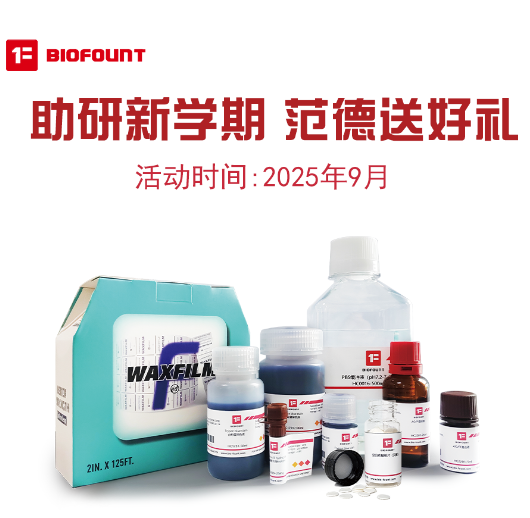
9月开学季——助研新学期 范德送好礼
2025/8/28 15:30:55

Waxfilm 实验室封口膜:技术与国际市场的双重突破
在实验室耗材领域,封口膜是保障实验准确性与稳定性的关键产品之一。近年来,Waxfilm?实验室封口膜凭借其卓...
2025/5/13 13:03:40
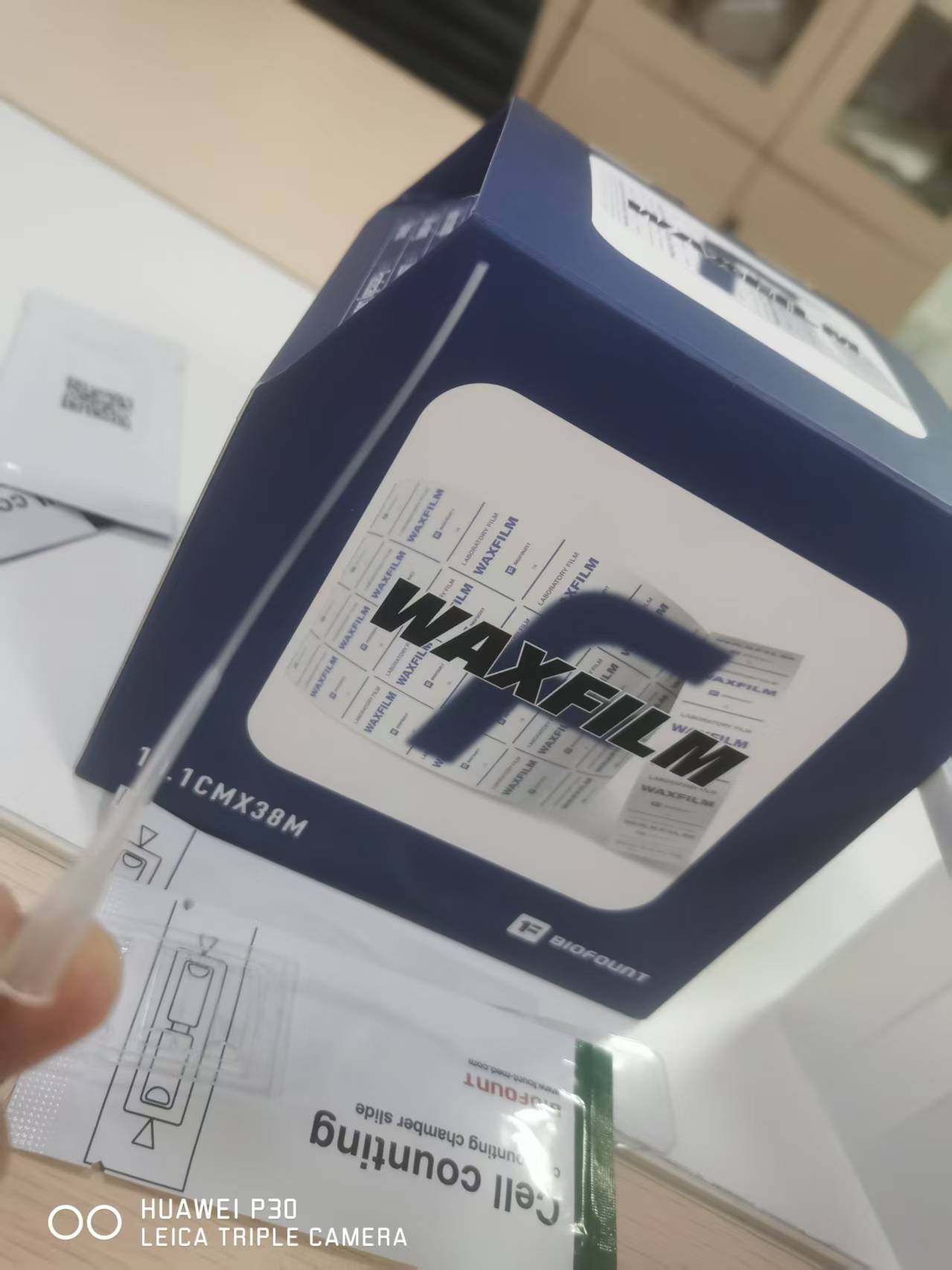
Waxfilm实验室封口膜的5大突破
Waxfilm实验室封口膜作为生物功能膜领域的国产技术突破和品牌突破,是生物领域中国技术发展的缩影。
2025/5/6 17:02:07
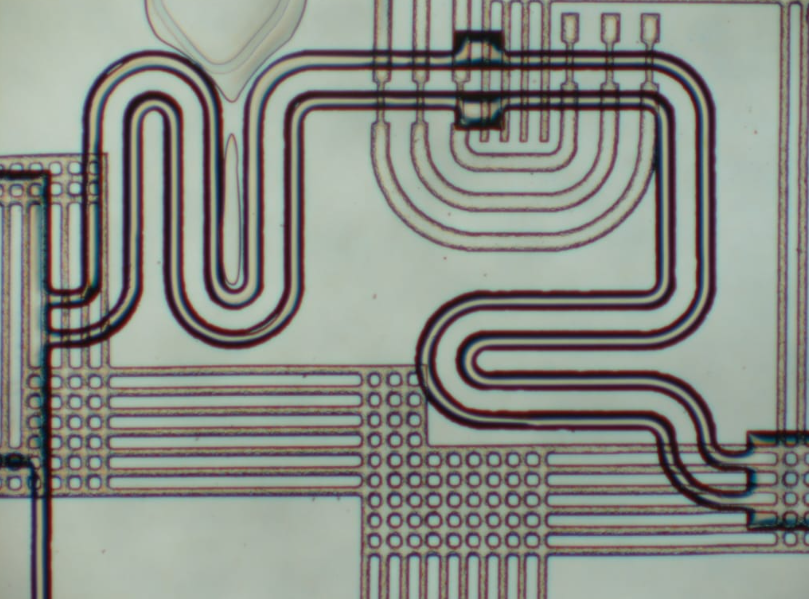
各种微流控芯片键合方法的优缺点
微流控芯片键合:目前主要有激光焊接、热压键合、胶键合、超音波焊接,每种方法都有各自的优缺点。本文主要介绍聚酯...
2023/7/28 10:43:09
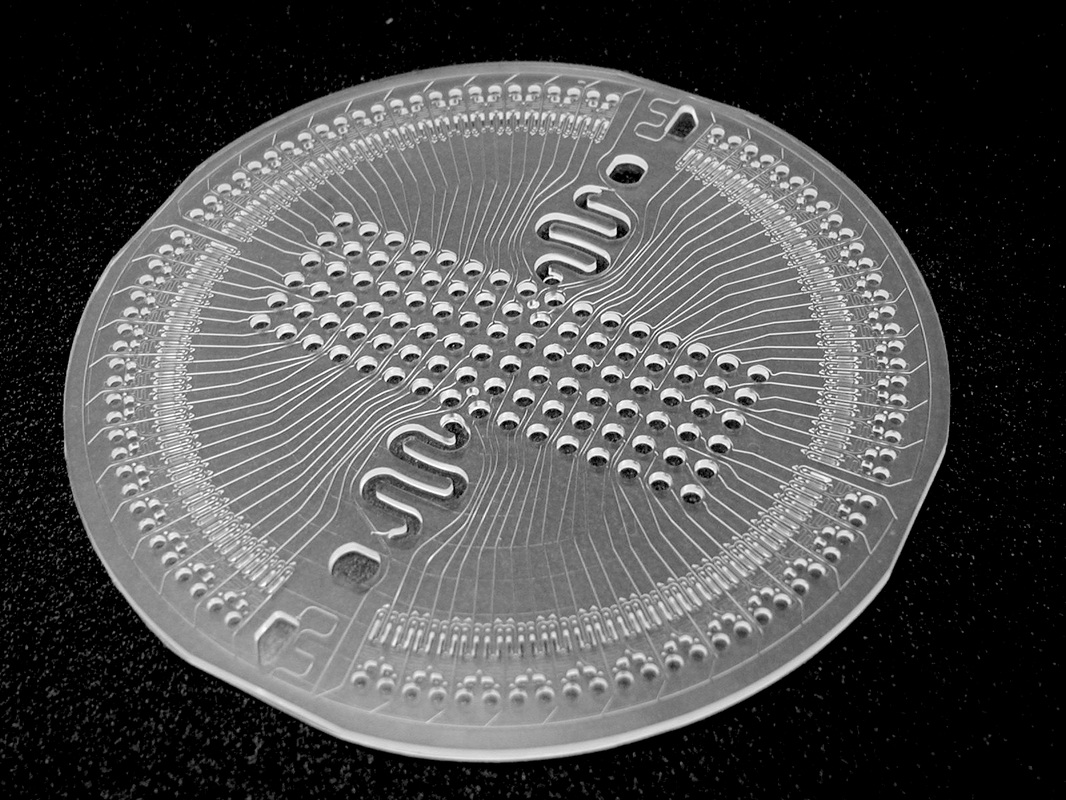
新一代微流控键合解决方案
微流控键合解决方案:微流控芯片制造的一个重要环节,也是最容易被忽视的--芯片键合。其中一个重要因素是:微流控...
2023/7/27 12:44:28
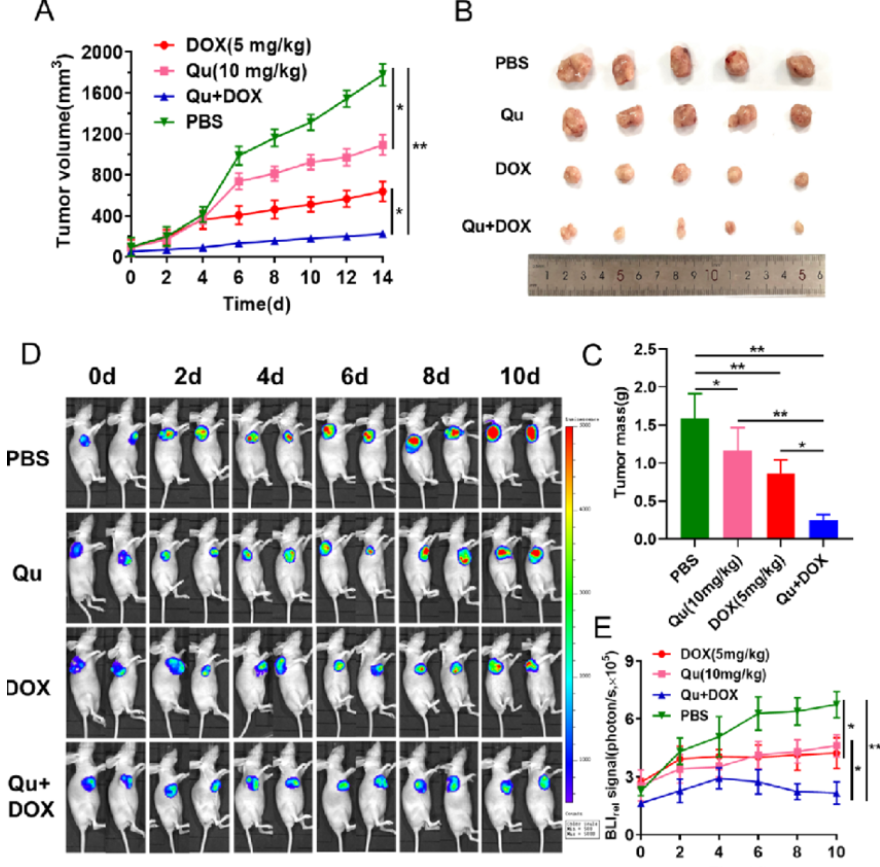
荧光素钾盐使用说明
D-荧光素钾盐(K+)设计用于体外和体内生物发光测定。D-荧光素的质量和纯度对于获得良好和可重复的结果至关重...
2023/7/20 11:05:11
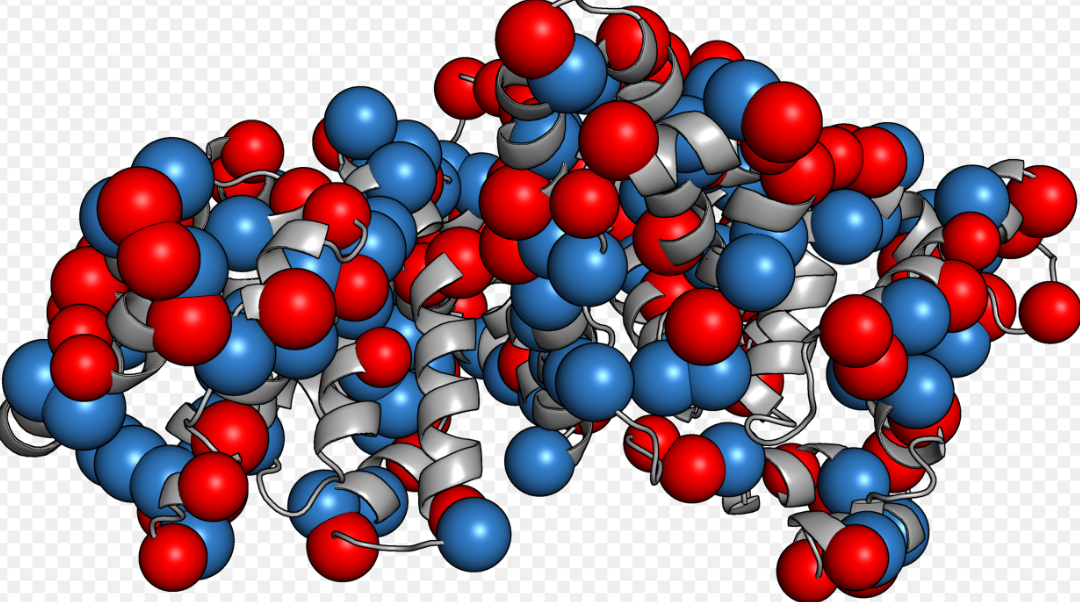
如何选BSA(牛血清白蛋白)
如何选BSA(牛血清白蛋白):牛血清白蛋白(BSA)有多种形式,如何选择适合自己的牛血清白蛋白(BSA)是一...
2023/2/14 13:09:18




 购物车
购物车 



